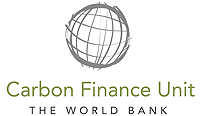Overview
The aim of the Indocement Blended Cement Project was to manufacture and sell a new type of cement (“blended cement”) categorized under a new Cement Standard (Indonesian standard SNI 15- 7064-2004). This new cement type has been introduced as part of Indocement’s efforts to increase the amount of various additive materials in the cement while maintaining a similar or improved cement quality compared to Ordinary Portland Cement (OPC, SNI-2049-2004 the updated SNI OPC type I standard). Blended cement has been produced by increasing the proportion of additive materials such as limestone and pozzolan in the cement fine grinding process, hence reducing the clinker content of cement. The pozzolanic materials used in Indocement’s Sustainable Cement Production Project included coal fly ash and volcanic ash (trass). The project was implemented at the three Indocement production sites located at Citeureup and Cirebon, both West Java, and Tarjun South, Kalimantan. Taken together, Indocement operates twelve cement kilns at three plants. The project has delivered several environmental improvements and socio-economic benefits like: replacing fossil fuels with biomass and other alternative fuels, systematic monitoring of alternative fuel materials and emissions from water, soil and air by independent local and international laboratories, conservation of genetic, species and ecosystem diversity, helping Lembar village adopt and become hamlet for biogas, and create local jobs.
Benefits
- Replacement of fossil fuels with biomass and other alternative fuels
- Systematic monitoring of alternative fuel materials and emissions from water, soil and air by independent local and international laboratories
- Conservation of genetic, species and ecosystem diversity
- Helping Lembar village adopt and become hamlet for biogas
- Creation of local jobs
